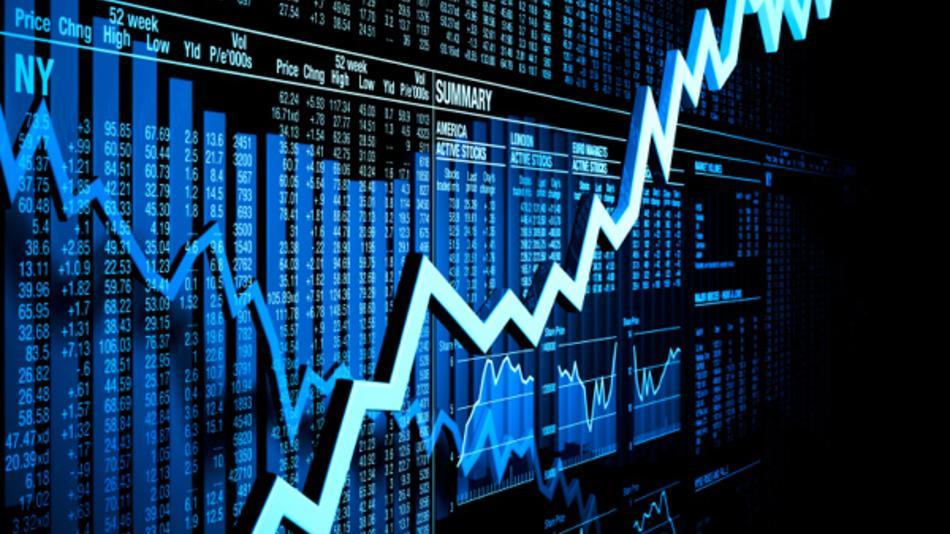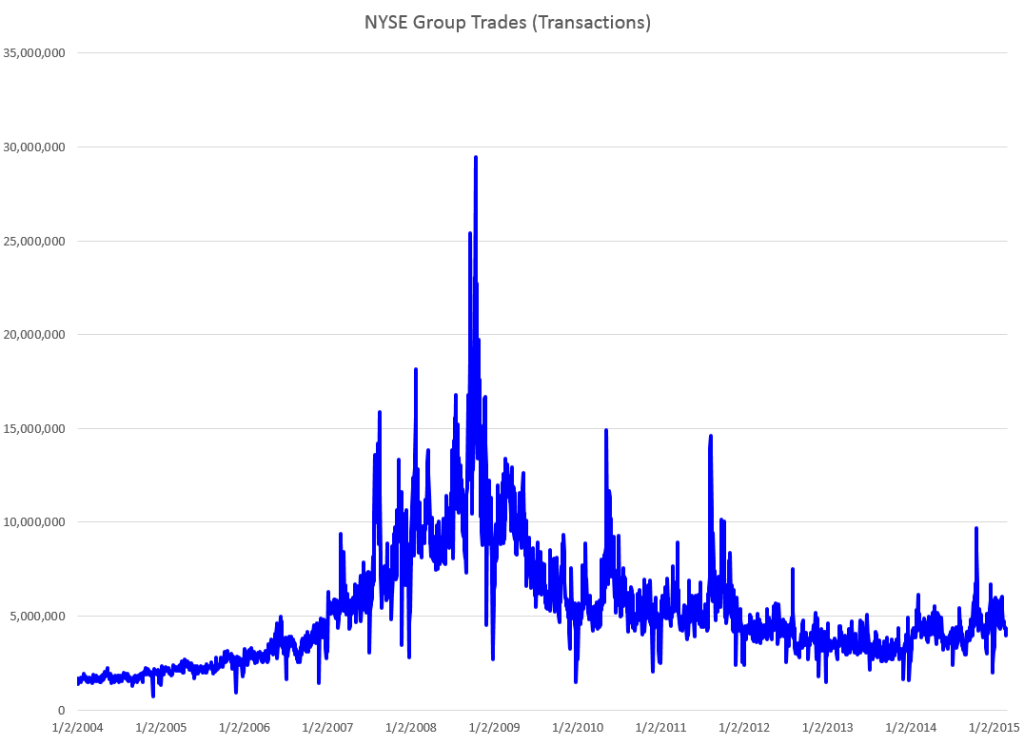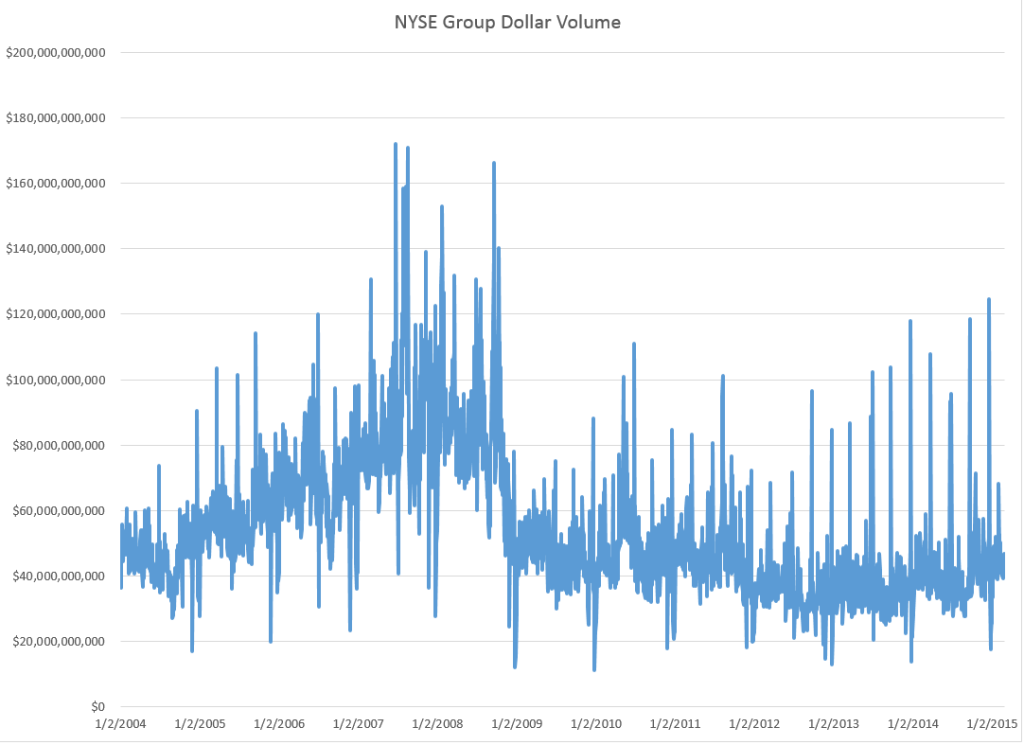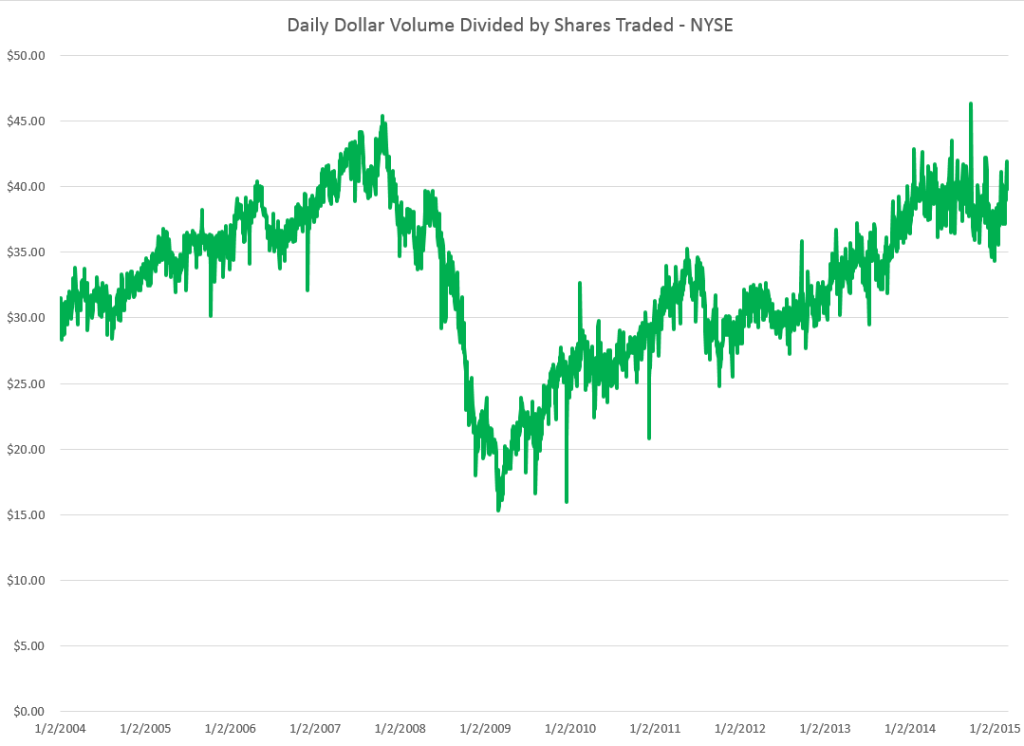The New York Stock Exchange (NYSE) maintains a data library with historic numbers on trading volumes. Three charts built with some of this data tell an intriguing story about trends and predictability of volumes of transactions and dollars on the NYSE.
First, the number of daily transactions peaked during the financial troubles of 2008, only showing some resurgence lately.
This falloff in the number of transactions is paralleled by the volume of dollars spent in these transactions.
These charts are instructive, since both highlight the existence of “spikes” in transaction and dollar volume that would seem to defy almost any run-of-the-mill forecasting algorithm. This is especially true for the transactions time series, since the spikes are more irregularly spaced. The dollar volume time series suggests some type of periodicity is possible for these spikes, particularly in recent years.
But lower trading volume has not impacted stock prices, which, as everyone knows, surged past 2008 levels some time ago.
A raw ratio between the value of trades and NYSE stock transactions gives the average daily price per transaction.
So stock prices have rebounded, for the most part, to 2008 levels. Note here that the S&P 500 index stocks have done much better than this average for all stocks.
Why has trading volume declined on the NYSE? Some reasons gleaned from the commentariat.
- Mom and Pop traders largely exited the market, after the crash of 2008
- Some claim that program trading or high frequency trading peaked a few years back, and is currently in something of a decline in terms of its proportion of total stock transactions. This is, however, not confirmed by the NYSE Facts and Figures, which shows program trading pretty consistently at around 30 percent of total trading transactions..
- Interest has shifted to options and futures, where trading volumes are rising.
- Exchange Traded Funds (ETF’s) make up a larger portion of the market, and they, of course, do not actively trade.
- Banks have reduced their speculation in equities, in anticipation of Federal regulations
See especially Market Watch and Barry Ritholtz on these trends.
But what about the impact of trading volume on price? That’s the real zinger of a question I hope to address in coming posts this week.



